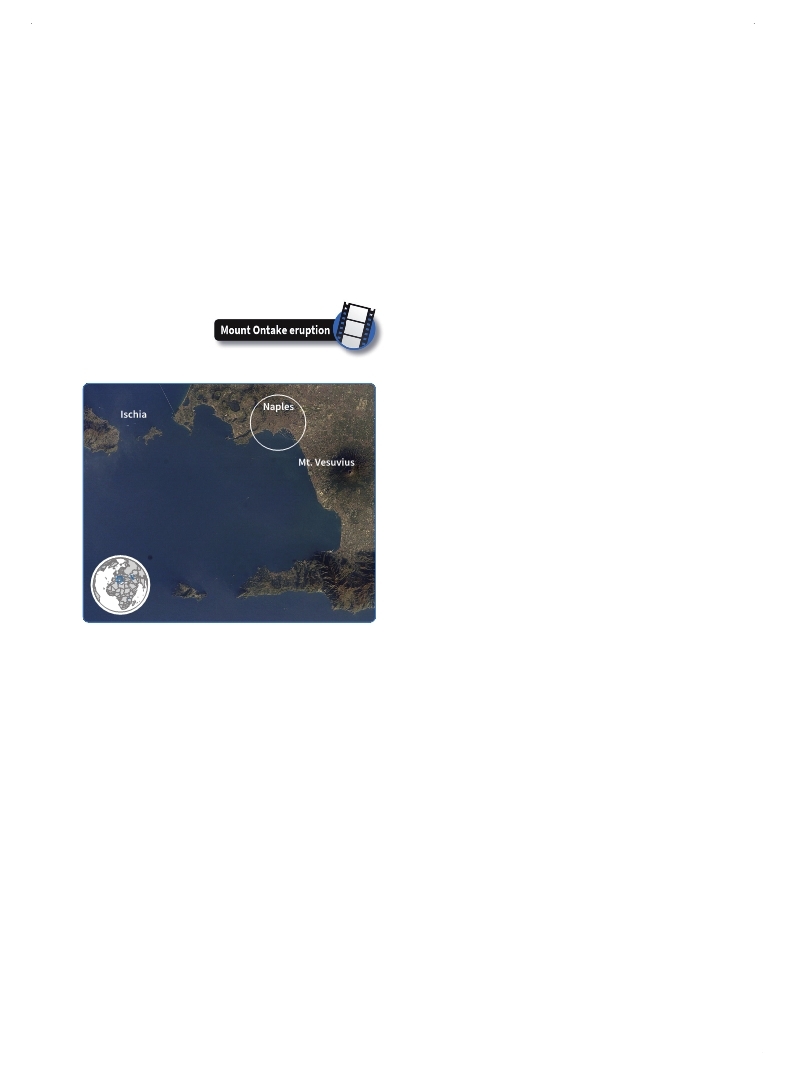 |
Global Assessment Report on Disaster Risk Reduction 2015
Making development sustainable: The future of disaster risk management |
 |
Global Assessment Report on Disaster Risk Reduction 2015
Making development sustainable: The future of disaster risk management |
|
|

80
Part I - Chapter 3
Figure 3.29 Satellite image of the Naples area
(Source:
 GVM, 2014a GVM, 2014a GVM (Global Volcano Model). 2014a,Global Volcanic Hazards and Risk, Summary background paper. Background Paper prepared for the 2015 Global Assessment Report on Disaster Risk Reduction. Geneva, Switzerland: UNISDR. GVM (Global Volcano Model). 2014a,Global Volcanic Hazards and Risk, Summary background paper. Background Paper prepared for the 2015 Global Assessment Report on Disaster Risk Reduction. Geneva, Switzerland: UNISDR. Click here to view this GAR paper. Relatively small countries, such as SIDS (Figure 3.30), have the highest proportion of their populations exposed to volcanic hazard.
However, given that most volcano-related mortality has occurred in a small number of eruptions, volcanic disaster risk is highly idiosyncratic and difficult to model. For example, the relatively modest eruption of Nevado del Ruiz in Colombia in 1985 resulted in the death of more than 23,000 people in towns up to 45 km away as a result of lahars.
Despite population growth, the number of fatalities per eruption has declined dramatically in
the last few decades, suggesting that mortality has been reduced thanks to improved volcano monitoring, hazard assessment and awareness, early warning, forecasts, communication and preparedness around specific volcanoes. In fact, it is estimated that such measures have saved about 50,000 lives over the last century (Auker et al., 2013
Auker, M.R., R.S.J. Sparks, L. Siebert, H.S. Crosweller and J.A. Ewert. 2013,A statistical analysis of the global historical volcanic fatalities record, Journal of Applied Volcanology, 2:2 (February).. . Economic loss risk from volcanic eruption
Volcanic eruptions are associated with increasingly large economic impacts. For example, the losses from the November 2010 eruption of Merapi in Indonesia are estimated at US$3.12 billion (Surono et al., 2012
Surono, Philippe Jousset, John Pallister, Marie Boichu, M. Fabrizia Buongiorno, Agus Budisantoso, Fidel Costa, Supriyati Andreastuti, Fred Prata, David Schneider, Lieven Clarisse, Hanik Humaida, Sri Sumarti, Christian Bignami, Julie Griswold, Simon Carn, 2012,The 2010 explosive eruption of Java’s Merapi volcano—A ‘100-year’ event, Journal of Volcanology and Geothermal Research, Vols. 241-242 (October): 121-135.. . UNISDR. 2013a,Global Assessment Report on Disaster Risk Reduction: From Shared Risk to Shared Value: the Business Case for Disaster Risk Reduction, Geneva, Switzerland: UNISDR.. . Ragona, M., F. Hannstein and M. Mazzocchi. 2011,The Financial Impact of the Volcanic Ash Crisis on the European Airline Industry, Chapter 3. In:Governing Disasters: The Challenges of Emergency Risk Regulation, A. Alemanno, ed. Ed-ward Elgar Publishing.. . Volcanic ash is the most widespread of all volcanic hazards. Volcanic eruptions generate convective plumes of gas, ash and rock fragments which can spread over hundreds of kilometres, depending on the size of the eruption and the speed and direction of prevailing winds. Depending on the intensity of volcanic ash fall (i.e. from 1 mm to 200 mm) and the exposed environment, impacts may be diverse and range from traffic and aviation disruption to health problems, soil and water contamination, crop failure, damage to machinery, and collapsing roofs.
volcanic hazard is concentrated in six countries: Indonesia, the Philippines, Japan, Mexico, Ethiopia, Guatemala and Italy. Around two-thirds of the total exposed population is concentrated in Indonesia.
For example, in Naples, Italy (Figure 3.29), over 2 million people live in close proximity to three active volcanoes (Vesuvius, Campi Flegrei and Ischia).
|
 
Page 1Page 10Page 20Page 30Page 40Page 50Page 60Page 70Page 71Page 72Page 73Page 74Page 75Page 76Page 77Page 78Page 79Page 80Page 81->Page 82Page 83Page 84Page 85Page 86Page 87Page 88Page 89Page 90Page 91Page 92Page 93Page 94Page 100Page 110Page 120Page 130Page 140Page 150Page 160Page 170Page 180Page 190Page 200Page 210Page 220Page 230Page 240Page 250Page 260Page 270Page 280Page 290Page 300Page 310
|
|
 
|
 
|
